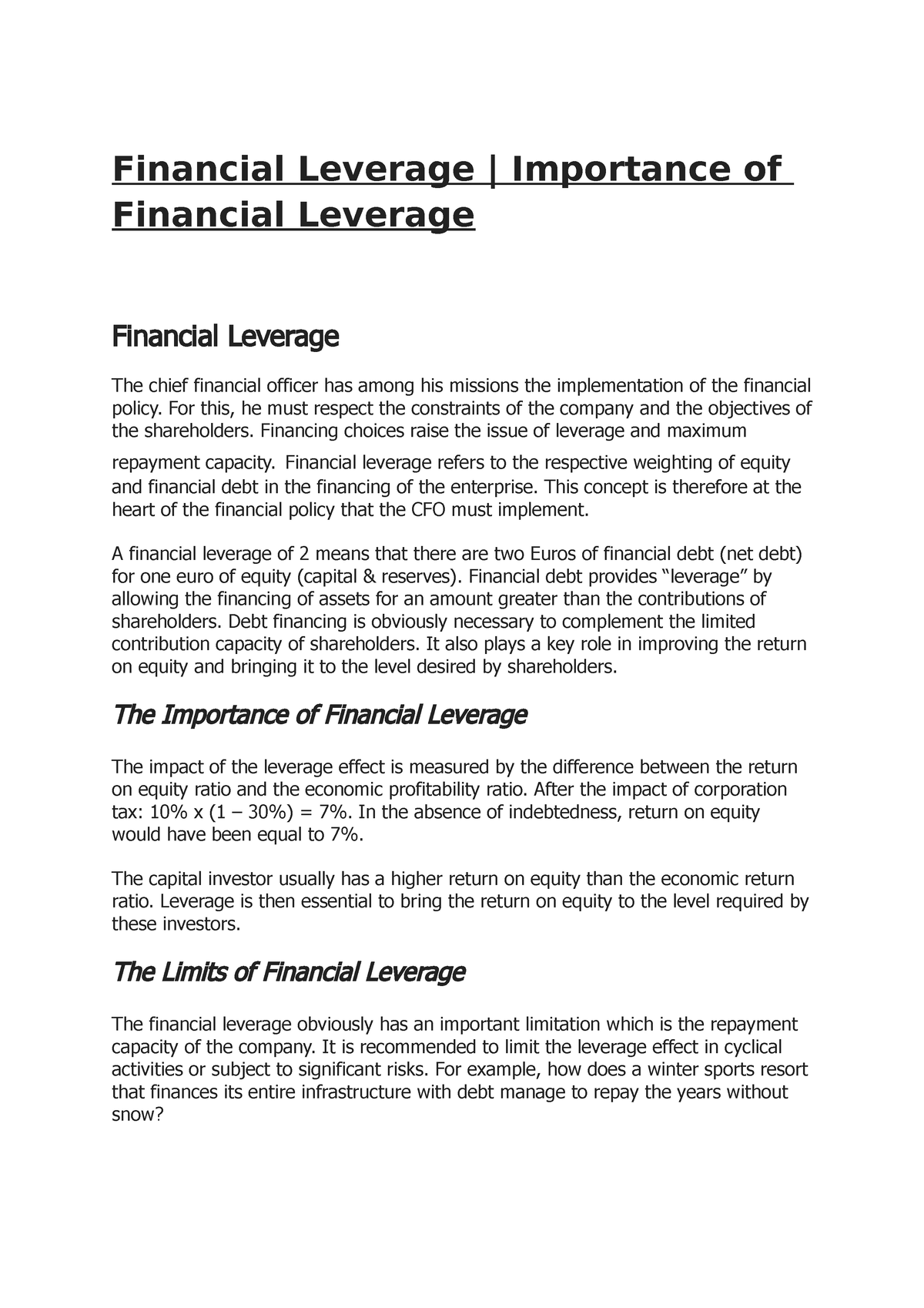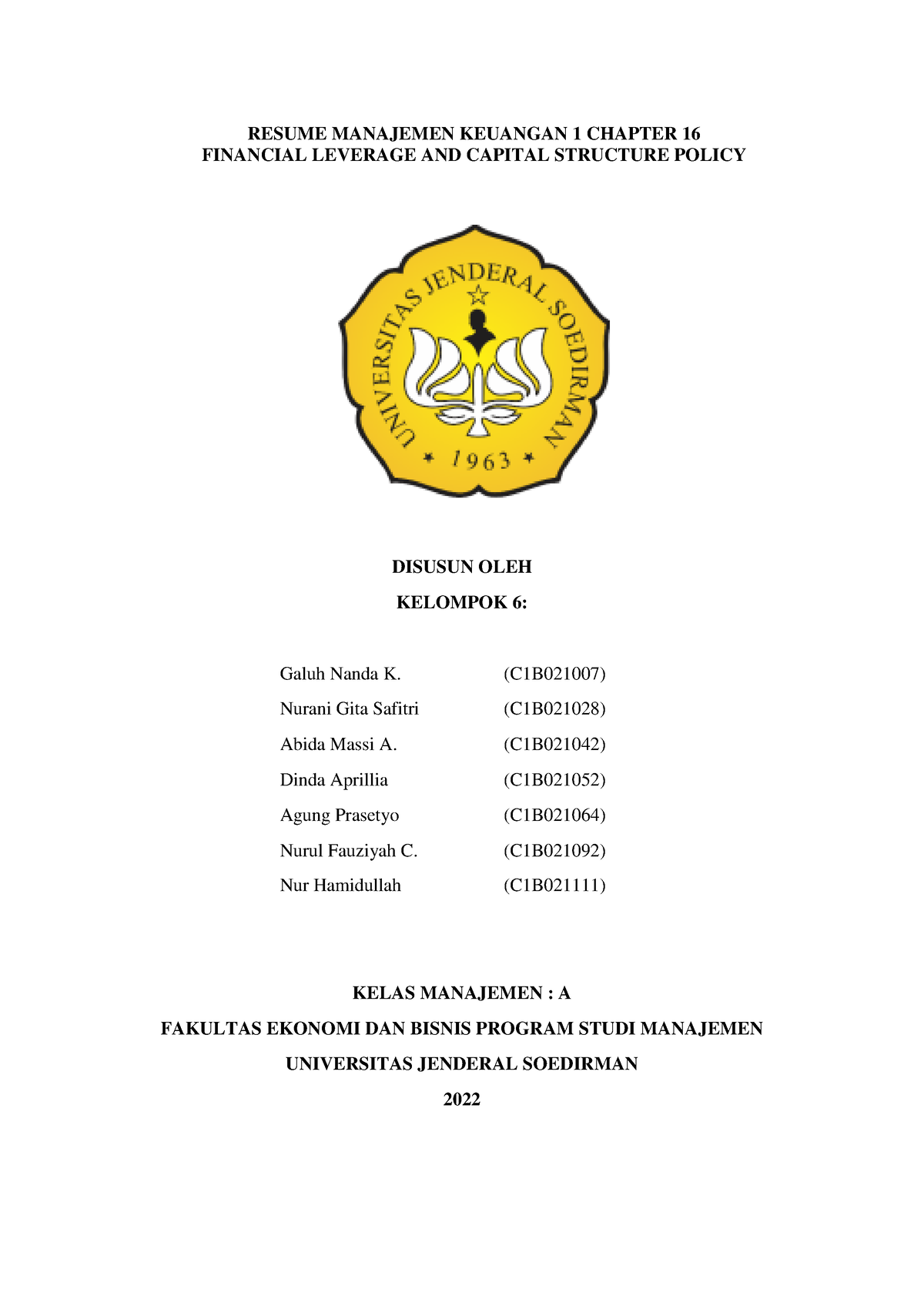Leverage Ratio: What It Is and How to Calculate

For example, inventory and raw materials are variable costs while salaries for the corporate office would be a fixed cost. Borrowing money allows businesses and individuals to make investments that otherwise might be out of reach, or the funds they already have more efficiently. For individuals, leverage can be the only way you can realistically purchase certain big-ticket items, like a home or a college education. While leverage in personal investing usually refers to buying on margin, some people take out loans or lines of credit to invest in the stock market instead. Leveraged ETFs are self-contained, meaning the borrowing and interest charges occur within the fund, so you don’t have to worry about margin calls or losing more than your principal investment. This makes leveraged ETFs a lower risk approach to leveraged investing.
How is financial leverage measured?
Financial leverage is when a company or investor uses debt to purchase an asset because they expect the asset to earn income or rise in value. An increasing debt ratio and debt-to-equity ratio is a sign of a bigger reliance on debt, which could impact the company’s ability to serve its loan obligations. Large debt loads can make businesses particularly vulnerable during an economic downturn.

Q. How can investors evaluate a company’s leverage?
While we strive to provide a wide range of offers, Bankrate does not include information about every financial or credit product or service. There’s no single formula for leverage — investors and analysts use various ratios to measure leverage. Explore the nuances of financial leverage, its types, calculations, and its impact on earnings and risk assessment. The main measures include the debt-to-equity ratio and the debt-to-assets ratio. When used effectively, debt can generate a higher rate of return than it costs.
Financial Leverage vs. Margin
- Under this type of structure, the company’s ROE is projected to fall between the range of 15.6% and 23.4%, depending on the level of the company’s pre-tax earnings.
- Financial leverage refers to a corporation borrowing capital from lenders to meet its recurring, operational spending needs and capital expenditures (Capex).
- With this in mind, management tends to structure the capital makeup of the company in a manner that will provide flexibility in raising future capital in an ever-changing market environment.
- Large debt payments eat away at revenue and, in severe cases, put the company in jeopardy of default.
- A company’s managers, shareholders, and lenders need to understand the level of risk a company carries at all times.
The company has assets of $1 million, liabilities of $700,000 and stockholders’ equity totaling $300,000. The resulting debt-to-equity ratio of 2.3 might scare off some would-be investors. When the lending environment later tightens, expect increasing numbers of these investors to become insolvent as their positive leverage turns negative and they cannot support their liabilities. In a tighter lending environment, at least expect investors to sell off their investments and use the resulting funds to pay back their highest-interest loans. Based on the historical data from the trailing two periods of our hypothetical company, there is $1.50 of total debt for each $1.00 of total assets on its balance sheet. To perform some credit ratio analysis, alongside computing the financial leverage ratio, the following is the income statement data of our company.
There are many industry sectors in which companies operate with a high degree of financial leverage. Unfortunately, the excessive use of financial leverage by many companies in these sectors has played a paramount role in forcing a lot of them to file for Chapter 11 bankruptcy. how to make a commercial invoice Buying on margin is the use of borrowed money to purchase securities. Buying on margin generally takes place in a margin account, which is one of the main types of investment account. The debt-to-equity ratio is also represented as the financial leverage of a business entity.
Debt and Debt-to-Equity Ratios
If the value of your shares fall, your broker may make a margin call and require you to deposit more money or securities into your account to meet its minimum equity requirement. It also may sell shares in your margin account to bring your account back into good standing without notifying you. In general, you can borrow up to 50% of the purchase price of margin investments. In this example, the second company is generating a profit of 180,000 USD per annum on an investment of 100,000 USD. The company has purchased a manufacturing unit on cash with equity financing. Losses can occur when the value of an investment fails to rise above the cost to borrow the money.
For example, an Interest Coverage Ratio of 5 means that the company’s EBIT is five times its interest expenses, providing a comfortable buffer for meeting its debt obligations. This ratio indicates the proportion of a company’s assets financed by debt. There are various leverage ratios, and each of them is calculated differently.
Financial leverage can help you tap into bigger investments, but it comes with increased risk. Still, the chance at accelerated growth and increased returns might be worth it to you. Just remember, at the end of the day, you’ll still have to repay what you borrow, regardless of how well the investment performs. This ratio represents the amount of assets a company holds relative to its equity.
